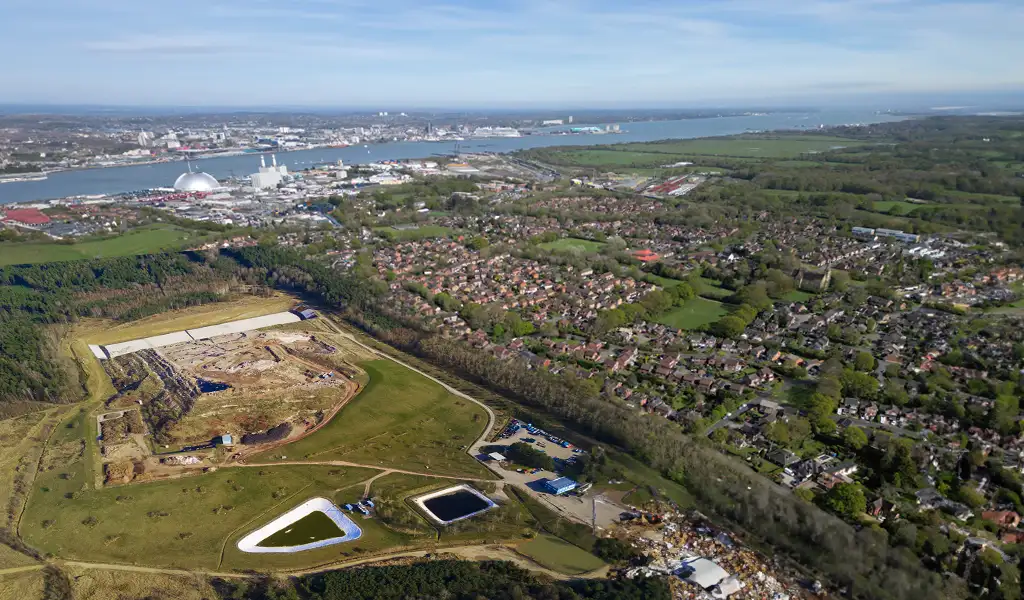Soil Gas / Vapour Monitoring
- What is Soil Gas/Vapour?
- Why is it Important to Monitor Soil Gas/Vapour?
- Soil Gas/Vapour Monitoring Applications
- Solinst Products – Soil Gas/Vapour
- Solinst Soil Gas/Vapour Sampling Instruments
- Means of Obtaining Soil Gas/Vapour Samples

What is Soil Gas/Vapour?
Volatile chemicals in contaminated soil or groundwater can generate vapours as they breakdown (also known as soil gas), which may travel through the soil and emit out into the environment or into indoor air spaces. This emission of soil vapours from the subsurface and into overlying buildings is known as vapour intrusion.
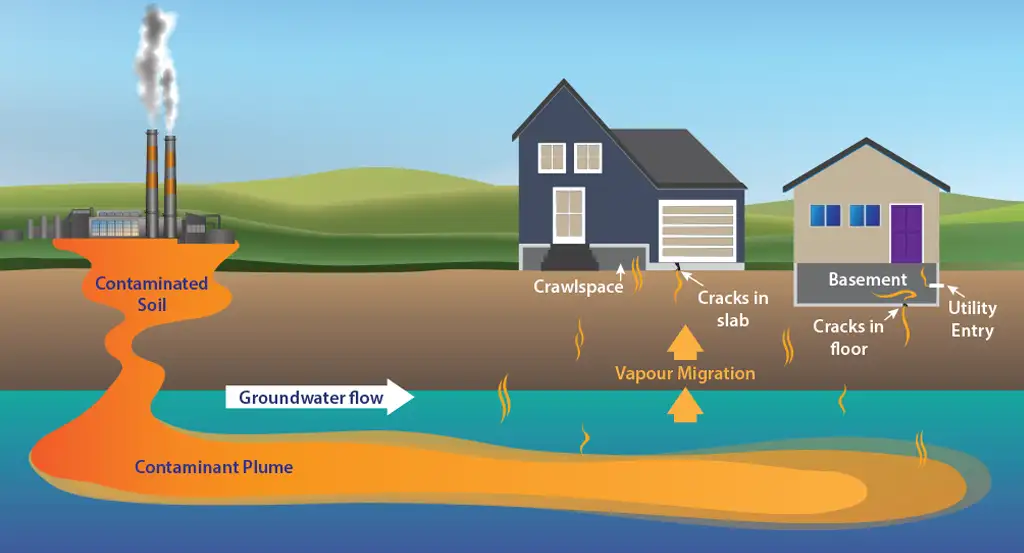
Why is it Important to Monitor Soil Gas/Vapour?
Soil gas monitoring is crucial in environmental and industrial contexts to measure the concentration of gases in the soil. Typically, monitoring assesses the potential risk of soil vapour intrusion into buildings and ensures the safety of the surrounding environment. By regularly monitoring soil gas, industries can effectively manage and mitigate the potential risks associated with volatile organic compounds and other hazardous substances that may be present in the soil.
Vapour monitoring is a process that involves collecting and analyzing airborne vapours and gases. It is essential for identifying potential sources of air pollution and evaluating the effectiveness of measures taken to reduce emissions. Vapour monitoring is a critical component of environmental compliance programs. It is widely used in industrial, construction, and manufacturing settings to ensure air quality regulations and standards compliance.
Soil vapour investigations typically spread across a site in a 'grid-like' pattern and extend to relatively shallow depths (i.e. <25 ft. or 7.6 m). Sub-slab vapour sampling (immediately beneath the building) or near-slab vapour sampling (within 10 ft. or 3 m of the building) are typical of risk assessments. Near-slab sampling is primarily performed to identify underground contamination and the potential source, extent and movement of the pollutants. Sub-slab vapour samples are used with indoor and outdoor air samples to determine any current human exposure, potential for future exposure and site-specific attenuation factors.
Vadose zone monitoring refers to the systematic observation and measurement of the unsaturated zone between the land surface and the water table. This monitoring is essential for understanding the movement of water, gases, and contaminants in the subsurface environment. By monitoring the vadose zone, scientists and environmental professionals can assess the potential risks of groundwater contamination and develop effective strategies for groundwater protection and remediation.
Unsaturated zone monitoring is a broader term that encompasses the monitoring of soil gas, vapour, and vadose zone conditions. This type of monitoring is critical for evaluating the potential risks associated with hazardous substances in the unsaturated zone and for ensuring the protection of groundwater and surface water resources. It is commonly employed in environmental site assessments, remediation projects, and industrial operations to identify and address potential sources of contamination.
Efficient and accurate monitoring of soil gas, vapour, vadose zone, and unsaturated zone conditions is essential for ensuring the safety of human health and the environment. It provides valuable data for assessing the potential risks of subsurface contamination and for developing effective strategies to manage and mitigate these risks. By utilizing advanced monitoring technologies and best practices, industries, environmental agencies, and regulatory bodies can proactively address potential threats to the environment and public health. Effective monitoring also supports compliance with environmental regulations and standards, contributing to sustainable and responsible environmental management practices.
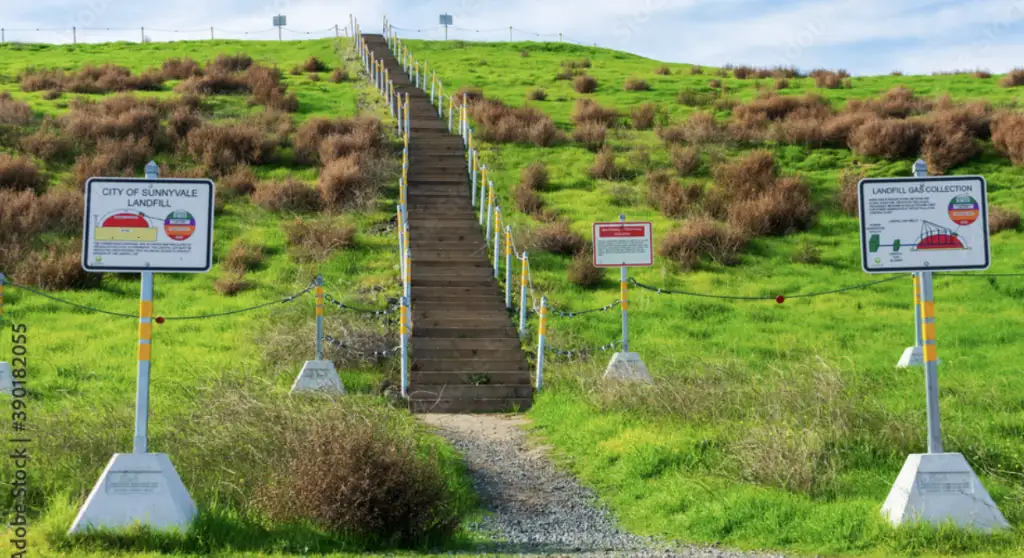
Soil Gas/Vapour Monitoring Applications:
- Soil gas sampling
- Vapour intrusion monitoring
- Sparge points
- Risk assessments
- Attenuation monitoring
- Landfill monitoring
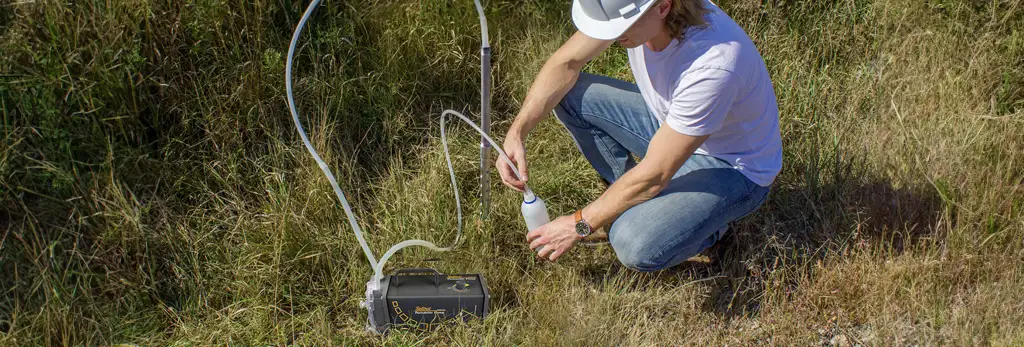
Solinst Products – Soil Gas/Vapour
Providing an easy, low-cost, minimal site disturbance approach; Solinst 615 Drive-Point Piezometers are ideal for initial investigations. Information obtained from these drive-in devices is useful in determining optimum placement of permanent piezometers, monitoring systems such as the Model 403 Multilevel System, or remediation equipment. Model 410 Peristaltic Pumps are ideal for sampling soil gas from shallow depths.

Solinst Soil Gas/Vapour Sampling Instruments:
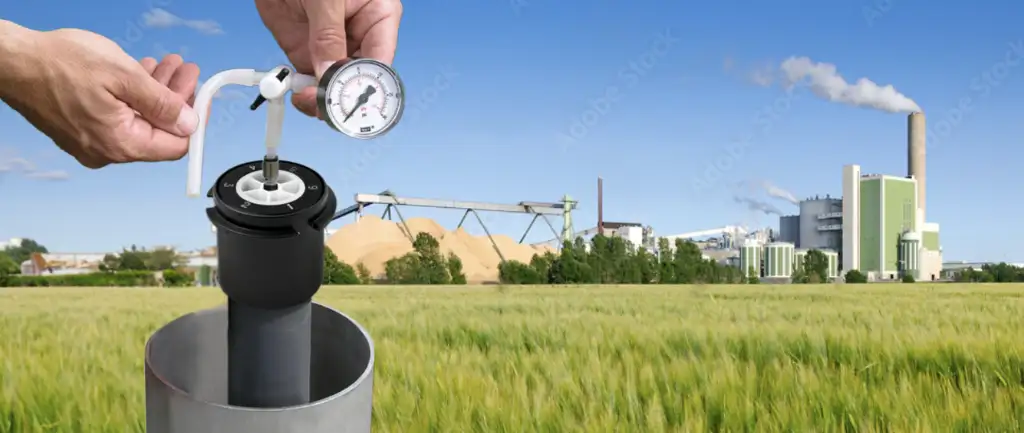
Means of Obtaining Soil Gas/Vapour Samples:
- Model 615 Drive-Point Piezometers
- Model 615ML Multilevel Drive-Point Piezometers
- Model 601 Standpipe Piezometers
- Model 403 CMT Multilevel Systems
- Model 401 Waterloo Multilevel System

